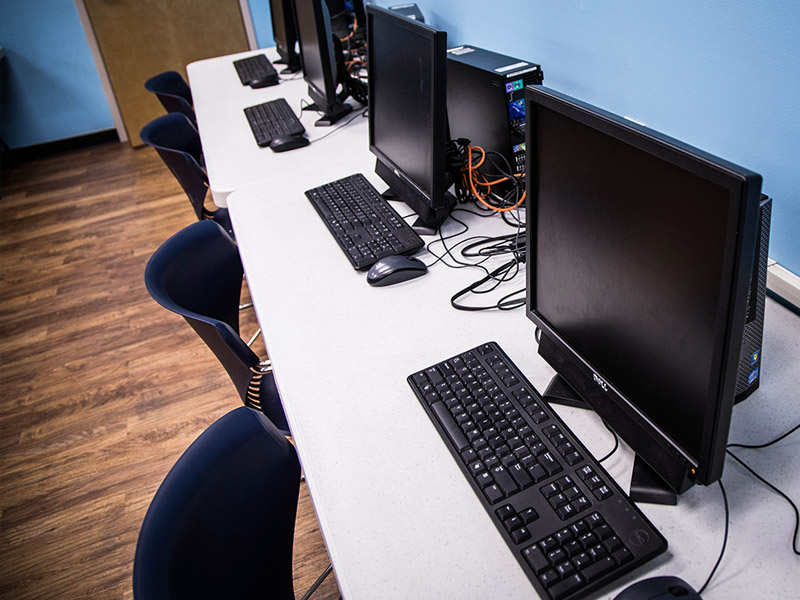No one experiences impulse control disorder the same way as someone else. Understanding the signs, symptoms and side effects of impulse control disorder is a key component toward starting the recovery journey.
Understanding Impulse Control Disorder
Learn about impulse control disorder
Impulse control disorders involve chronic problems in one’s ability to control his or her emotions and behaviors. This lack of self-control causes the children and adolescents suffering from these disorders to experience significant distress or impairment in all, or most, areas of functioning. This includes disruptions or dysfunctions in social, personal, familial, and academic aspects of the child’s lives. People with impulse control disorders engage in repetitive behaviors despite adverse consequences that may occur as a direct result of those behaviors. Even if these individuals have the desire to control their behaviors, it can be impossible as they continuously experience an increasing urge or craving to engage in the behavior.
Kleptomania is an uncontrollable, repetitive impulse to steal, even though the child is aware that the behavior is wrong, senseless. Often, the items stolen by someone with kleptomania are not even things that the person needs.
Some of the most common forms of impulse control disorders present in children and adolescents include:
Pyromania is the deliberate and purposeful act of setting things on fire in order to receive instant gratification or as an attempt to relieve tension. Pyromania is dissimilar to arson, which involves the pursuit of personal, monetary, or other gains.
Compulsive sexual behavior is excessive or uncontrollable thoughts or behaviors revolving around sexual activities. This can include things such as excessive masturbation, promiscuity, excessive use of pornography, exhibitionism, voyeurism, and fetishes that becomes so powerful that it begins to negatively impact the individual’s life.
Intermittent explosive disorder, which involves recurrent behavioral outbursts that represents a person’s inability to control aggressive impulses.
Causes and Risk Factors
Causes and risk factors for impulse control disorder
There has yet to be a specific reason identified as to what causes impulse control disorders to develop. Most professionals believe that it is the combination of multiple factors, including genetic, physical, and environmental risk factors.
Genetic: There seems to be a genetic link tied to the onset of impulse control disorders. Studies have shown that children and teens who have family members that suffer from mental health disorders have a higher susceptibility of developing impulse control disorders than others.
Physical: It has been said that there is a possibility that when certain brain structures that are linked to the functioning of emotions, memories and planning become imbalanced, impulse control behaviors can develop.
Environmental: Professionals in the field believe that children who have grown up in families or in homes where explosive behaviors, violence, verbal abuse, and physical abuse were common are more likely to develop impulse control disorders. Some children and adolescents may unconsciously find that participating in such behaviors provides them with some sense of an escape from the chaos around them.
Risk Factors:
- History of drug abuse
- Young age
- Being male
- Exposure to violence
- Family history of mood disorders
- Family history of substance abuse
Signs and Symptoms
Signs and symptoms of impulse control disorder
The signs and symptoms of impulse control disorders will vary based on the age of the children or adolescents suffering from them, the actual type of impulse control that they are struggling with, the environment in which they are living, and whether they are male or female. The following are some examples of different behavioral, physical, cognitive, and psychosocial symptoms that may be present in a child or adolescent suffering from an impulse control disorder:
Behavioral symptoms:
- Aggression
- Acting out in risky sexual behaviors
- Stealing
- Playing with fire
- Lying
Physical symptoms:
- The presence of STDs in adolescents who are participating in risky sexual behaviors
- Burns on the skin of children and adolescents who experiment or play with fire
- Injuries resulting from physical fights
Cognitive symptoms:
- Agitation
- Irritability
- Lack of patience
- Difficulty concentrating
- Obsessive and intrusive thoughts
Psychosocial symptoms:
- Low self-esteem
- Social isolation
- Brief periods of emotional detachment
- Depression
- Increased levels of anxiety
Effects
Effects of impulse control disorder
The effects of impulse control disorders can be extremely detrimental to the lives of children and adolescents who do not receive treatment. Some examples of the types of effects that can result from impulse control disorders can include:
- Difficulty developing and maintaining interpersonal relationships
- Failure in academic and career ventures
- Self-injury
- Criminal involvement and/or incarceration
- Low self-esteem
- Suicidal thoughts or behaviors
Co-Occurring Disorders
Impulse control disorder and co-occurring disorders
There a number of disorders that can occur alongside impulse control disorders. There are also disorders whose symptoms mirror those seen in people suffering from impulse control disorders. Some of the most common mental disorders that can occur with, or that directly mirror, impulse control disorders include:
- Bipolar disorder
- Generalized anxiety disorder (GAD)
- Obsessive-compulsive disorder (OCD)
- Posttraumatic stress disorder (PTSD)
- Conduct disorder (CD)
- Oppositional defiant disorder (ODD)
- Depressive disorders
- Antisocial personality disorder



